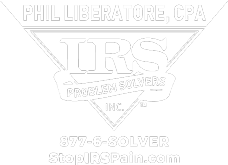Have you been ignoring your future retirement needs? This tends to happen when people are young; because retirement is far in the future, they believe that they have plenty of time to save for it. Some people even ignore the issue until late in life, which causes them to scramble to fund their retirement. Others even ignore the issue altogether, assuming that they will qualify for Social Security and that the resulting income will take care of their retirement needs.
Did you know that you can make retirement savings contributions after the close of the tax year and that these contributions may be deductible? With the April tax deadline in the near future, the window of opportunity is closing to maximize contributions to retirement and special-purpose plans for 2018. Many of these retirement contributions will also deliver tax deductions or tax credits for the 2018 tax year.
Contribution Opportunities – Some 2018 retirement contributions are available after the close of the year.
Traditional IRAs – For 2018, the maximum traditional IRA contribution is $5,500 (or $6,500 if the taxpayer is at least 50 years old on December 31, 2018). A 2018 traditional IRA contribution can be made until April 15, 2019. However, for taxpayers who have other retirement plans, some or all of their IRA contributions may not be deductible. To be eligible to contribute to IRAs (of any type), taxpayers—or spouses if married and filing jointly—must have earned income such as wages or self-employment income.
Roth IRAs – A Roth IRA is a nondeductible retirement account, but its earnings are tax-free upon withdrawal—provided that the requirements for the holding period and age are met. Roth IRAs are a good option for many taxpayers who aren’t eligible for deductible contributions to a traditional IRA. For 2018, the contribution limits for a Roth IRA are the same as for a traditional IRA: $5,500 (or $6,500 if the taxpayer is at least 50 years old). A 2018 Roth IRA contribution can also be made until April 15, 2019.
Caution: For those who have both traditional and Roth IRA contributions, the combined limit for 2018 is also $5,500 (or $6,500 if the taxpayer is at least 50 years old).
Spousal IRA Contributions – A nonworking spouse can open and contribute to a traditional or Roth IRA based on the working spouse’s earned income. The spouses are subject to the same contribution limits, and their combined contributions cannot exceed the working spouse’s earned income. Spousal IRA contributions for 2018 must also be made by April 15, 2019.
Simplified Employee Pension IRAs – Simplified Employee Pension IRAs are tax-deferred plans for sole proprietorships and small businesses. This is probably the easiest way to build retirement dollars, as it requires virtually no paperwork. The maximum contribution depends on a business’s net earnings. For 2018, the maximum contribution is the lesser of 25% of the employee’s compensation or $55,000. A 2018 contribution to such a plan can be made up to the return’s due date (including extensions). Thus, unlike a traditional or Roth IRA, a Simplified Employee Pension IRA can be established and funded for 2018 as late as October 15, 2019 (if an extension to file a 2018 Form 1040 has been granted).
Solo 401(k) Plans – A growing number of self-employed individuals are forsaking the Simplified Employee Pension IRA for a newer type of retirement plan called a Solo 401(k) or Self-Employed 401(k). This plan is available to self-employed individuals who do not have employees, and it is notable mostly for its high contribution levels.
For 2018, Solo 401(k) contributions can equal 25% of compensation, plus a salary deferral of up to $18,500. The total contributions, however, can’t exceed $55,000 or 100% of compensation. Note that an individual must have established the Solo 401(k) account by December 31, 2018, to make 2018 contributions. However, contributions to an established account can then be made up to the return’s due date (which can be extended to October 15, 2019, for most taxpayers). Taxpayers who did not establish a Solo 401(k) account by the end of 2018 can still open one now for 2019 contributions.
Health Savings Accounts – Health savings accounts are only available for individuals who have high-deductible health plans. For 2018, this refers to plans with a deductible of at least $1,350 for individual coverage or $2,700 for family coverage. These accounts allow individuals to save money to pay for their medical expenses.
Money that an individual does not spend on medical expenses stays in that person’s account and gains (tax-free) interest, just like in an IRA. Because unused amounts remain available for later years, health savings accounts can be used as additional retirement funds. The maximum contributions for 2018 are $3,450 for individual coverage and $6,900 for family coverage. The annual contribution limits are increased by $1,000 for individuals who are at least 55 years old. Contributions to a health savings account for 2018 can be made through April 15, 2019.
Please note that the information provided above is abbreviated. Contact this office for specific details on how each option applies to your situation.
Saver’s Credit – Low- and moderate-income workers are eligible for a saver’s credit that helps them offset part of the first $2,000 that they contribute to an IRA or a qualified employer-based retirement plan. This credit helps individuals who don’t normally have the resources to set money aside for retirement, and it is available in addition to the other tax benefits that are associated with retirement-plan contributions.
This credit is provided to encourage taxpayers to save for retirement. To prevent taxpayers from taking distributions from existing retirement savings and then re-depositing them to claim this credit, the qualifying retirement contributions used to figure the credit are reduced by any retirement-plan distributions taken during a “testing period”: the prior two tax years, the current year, and the portion of the subsequent tax year up to the return’s due date (including extensions).
Children with Earned Income – Many children hold part-time jobs, and after the recent tax reform, the standard deduction allows these children to earn $12,000 tax-free. This earned income also qualifies children for IRA contributions. Although children may balk at contributing their hard-earned income to an IRA, their parents or grandparents can gift Roth IRA contributions to children. That Roth IRA will significantly increase in value by the time the child reaches retirement age, 45 or 50 years later.
Individuals’ financial resources, family obligations, health, life expectancy, and retirement expectations vary greatly, and there is no one-size-fits-all retirement strategy. Events such as purchasing a home or putting children through college can limit retirement contributions; these events must be accounted for in any retirement plan.
If you have questions about any of the retirement vehicles discussed above or if you would like to discuss how retirement contributions will affect your 2018 tax return, please give this office a call.









